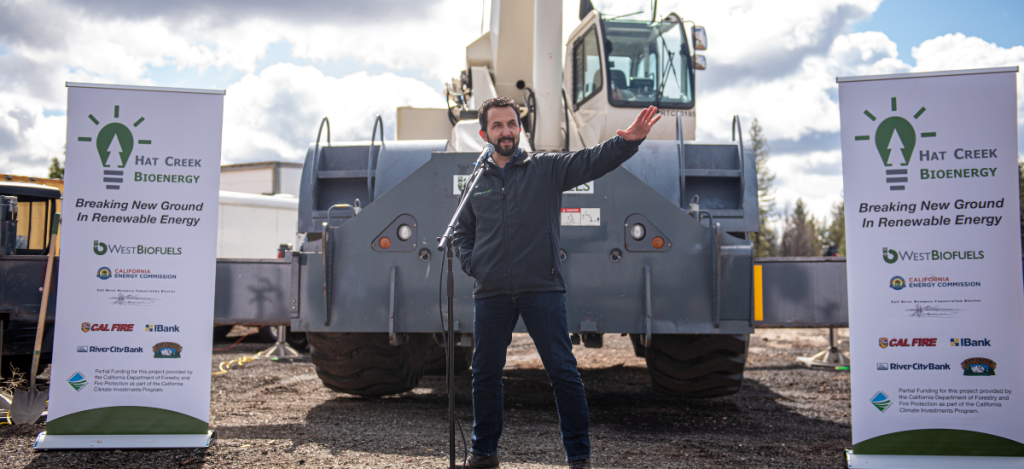Beyond AI Hype: Finding Practical Communications Value in a Sea of Possibilities

In the midst of AI’s meteoric rise, there’s a conversation not happening nearly enough outside tech conferences and industry echo chambers. While Silicon Valley debates the philosophical implications of frontier models, most professionals are asking much more practical questions: “How does this actually help me serve my clients better?” and “Is this worth my limited time and resources?” and “What are the ethical considerations?” and “Which tool is best for me and worth paying for?” As a small business owner and consultant, I’ve felt this tension firsthand. Between client deliverables, invoicing, business development, and the countless other responsibilities of running a consultancy, finding time to navigate the overwhelming landscape of AI tools feels like yet another unpaid task on an already overflowing plate. The Implementation Gap The disconnect between AI’s theoretical potential and practical implementation remains substantial because the technology itself only gets you so far. The real challenge lies in meaningful adoption that delivers tangible value. (Not to mention another fundamental question: Is it possible to achieve this without wiping out jobs, careers, and entire industries? By using AI, am I simply training my replacement?) This challenge is particularly acute for communications and marketing professionals. We trade in human connection, authentic storytelling, and strategic thinking—precisely the areas where AI’s application requires the most nuance and oversight. For that reason, I think the most creative ideators will ultimately survive the robot invasion. Only time will tell. The Tool Explosion Problem The proliferation of specialized AI tools has also created the latest version of decision fatigue. Need to convert text to speech? Here are a thousand options, each requiring research, trial periods, and subscription commitments. As you develop proficiency with one platform, a new competitor emerges with different capabilities and limitations. Just when I thought I had mastered ChatGPT and Claude AI, here came DeepSeek with Magnus hot on its heels. (Claude AI is still my favorite for content creation.) This constant churn generates significant opportunity costs. Time spent evaluating and learning new tools is time not spent on client work or business development. This represents a genuine business challenge for independent professionals rather than just an adoption hurdle. Practical Pathways Forward For communications and marketing professionals looking to navigate this landscape thoughtfully, here are a few of my favorite ways to balance innovation with practicality: Start with pain points, not possibilities: Rather than exploring what AI can do in theory, identify your most time-consuming or creatively draining tasks. The best implementation often addresses existing frustrations rather than creating new workflows. Embrace the “second draft” approach: Let AI generate rough initial content that you significantly revise and elevate. This preserves your voice while eliminating the intimidation of the blank page for routine work. Build a focused toolkit: Rather than chasing every new release, select 2-3 versatile platforms that address your core needs. For many professionals, this might include a text generation tool, a multimedia creator, and a research assistant. Futurepedia is a great resource for exploring and determining the best tools and software to suit your needs. Create guardrails through prompting: Develop and refine standardized prompts that consistently produce useful starting points for your work. Well-crafted prompts incorporating your brand voice and strategic preferences become valuable intellectual property. Claude AI enables you to build “projects” that capture brand voice, messaging, tone, and format, giving you more time for strategy and content ideation, editing, and refinement. Use AI for expansion, not contraction: Apply AI tools to explore more angles, create more variations, or develop more comprehensive supporting materials rather than simply automating what you already do well. Treat AI as a collaborative partner: Frame your relationship with these tools as collaborative rather than transactional. The most valuable outputs often emerge from multiple rounds of human-AI iteration rather than single-prompt solutions. The real opportunity isn’t replacing our expertise with automation but extending our communications capabilities into areas previously constrained by time and resources. When approached thoughtfully, AI tools can amplify our distinctly human talents rather than substitute for them.
The Big Hit: Why Media and Podcast Coverage Is Just the Beginning

National media coverage can feel like winning the PR lottery. There’s nothing quite like telling a client, “We landed the Washington Post” or “CNBC wants you on tomorrow” or “Joe Rogan read your book, when can you fly to Austin?” The celebration emails fly, champagne corks pop, and for a moment (and just a moment), you feel like you can do anything. And seasoned communications professionals know a crucial truth: securing coverage is just the first step. What you do next determines whether that media moment becomes a lasting asset or a fleeting victory lap. This has never been truer, as all news seems to be breaking, the 24/7 news cycle feels like a distant memory, and distrust of (corporate) media is at an all-time high. The most popular podcasts are constantly releasing new episodes, and there are no shortages of platforms to consume content. The Amplification Imperative A national media or popular podcast hit without an amplification strategy is like catching lightning in a bottle—then leaving the cap off. Without a plan to extend and leverage that coverage, even the most impressive placements quickly fade from public consciousness. I like using the “before, during, and after” mindset: Before: Prepare your digital infrastructure for increased traffic. Is your website ready? Are conversion pathways clear? Do you have follow-up content ready to engage new visitors? What’s the call to message? Have you created a summary blog post (linking back to the media/podcast source)? During: Create a real-time amplification plan across owned channels. How quickly can you share the coverage? Which stakeholders need immediate notification and on which platforms? Which media and podcasts should receive an ICYMI (In Case You Missed It) to spur new interviews? After: Develop a strategic repurposing calendar. How evergreen is the content? How can this coverage feed your content ecosystem for weeks or months to come? Should you record a corresponding video and/or podcast to go deeper on the subject? Each piece of coverage should serve as a building block for your next opportunity. A thoughtful approach includes: Using coverage as third-party validation in future pitches Creating content packages that combine multiple pieces of coverage to tell a cohesive story Identifying related angles that weren’t covered in the original piece for follow-up pitches Leveraging timely national conversations (even those not mentioning your organization) to secure local commentary opportunities The Multi-Directional Media Flow Perhaps the most overlooked aspect of media relations is understanding how stories travel between different tiers of media and podcasts. Generally speaking, you have hyper-niche/local, niche/local, statewide, regional, national, and international, and industry/sector. Whew! Coverage doesn’t just flow downward from national to local—it moves in all directions: Local to national: Regional stories with broader implications frequently get discovered by national producers scanning local outlets Industry to mainstream: Trade publications often serve as research sources for mainstream reporters looking for emerging trends Digital to traditional: Social conversations and digital-first content regularly spark interest from legacy media outlets This multi-directional reality creates strategic opportunities for savvy communicators. Owning your local media market isn’t just about regional visibility—it’s often the most effective pathway to future coverage that reaches and expands your targeted audiences. The Bottom Line Don’t measure success by the prestige of the placement alone. Evaluate media and podcast coverage based on how effectively it advances your strategic objectives and how successfully it’s integrated into your broader communications ecosystem. When approached with this mindset, even “smaller” placements can deliver outsized impact, while seemingly impressive national hits might underperform without proper amplification. The question isn’t just “Did we get covered?”—it’s “What did we do with the coverage we received?”
The Press Release Paradox: Evolution, Not Extinction

For decades, the press release reigned supreme in the communications kingdom—a formal declaration to the world that something important was happening. Write it up, blast it out on a newswire, and wait for journalists to come calling. But is this trusty tool still relevant in today’s overcrowded and fragmented media landscape? The short answer: yes, but with an asterisk. Public relations as a standalone strategy is starting to feel as important as full-page newspaper ads did a few years ago. Press releases haven’t disappeared, but their role has fundamentally shifted. Why Traditional Media Relations Is Losing Its Solo Act Today’s corporate media environment presents formidable challenges for the classic press release approach: Shrinking newsrooms means fewer journalists covering more beats with less time to sift through releases Overwhelming competition for attention, with the average journalist/producer/etc. receiving hundreds of emails daily Declining public trust and engagement with traditional sources Fragmented audiences who consume information across multiple platforms Society has shifted into a post-24/7 news cycle that quickly buries yesterday’s announcement When Press Releases Still Matter Despite these challenges, press releases maintain value in specific contexts: Creating an official record of company milestones and announcements Providing consistent messaging across stakeholders, coalitions, and/or organizations Improving search engine visibility SEO for your brand and news Meeting regulatory requirements (for public companies) Serving as the foundation for broader content creation, including social media captions, newsletter, blast email, fact sheet, and/or podcast episode The Modern Communications Symphony Rather than abandoning press releases entirely, savvy communicators are integrating them into comprehensive strategies: Direct-to-audience content: Develop robust newsrooms and/or blogs on your website where you control the narrative, messaging, framing, and timing (you’ll also capture all of the web traffic) Visual storytelling: Transform announcements into compelling infographics, short videos, podcasts, and/or interactive content (e.g., customer/client surveys or open-ended questions to ask your followers) Social-first approaches: Craft announcement strategies that begin on platforms where your audiences already gather — just keep your timing tight. If you announce news on TikTok, make sure your other channels are tee’ed up to amplify the content (e.g., send your press release to subscribers and media, promote on social media, and launch a podcast episode that same day). Relationship-based pitching: Personalize outreach to specific journalists based on their interests and previous coverage. Social media is a great way to discover your targets’ favorite places and sports teams, whether team dogs or cats, which can help you build relationships. Community engagement: Meet decision-makers where they are through sponsorships and events It reminds me of a client who initially hired me for traditional media relations. After analyzing their situation, I discovered their only meaningful audience consisted of three county supervisors. We still issued the press release and placed an op-ed, but our breakthrough came when we sponsored charity events these officials supported. Those informal conversations over wine proved far more effective than formal office meetings—and ultimately saved the client time and money. The Bottom Line Press releases haven’t disappeared; they’ve evolved. Like any communication tool, their effectiveness depends on how strategically you deploy them within your broader ecosystem. The most successful organizations don’t ask, “the press release or not?” but, “How does this announcement best reach and resonate with our specific audiences?” Sometimes, that means a traditional release, sometimes a video announcement, sometimes a direct stakeholder email—and often, a carefully orchestrated combination of all three.
Empowering Voices: The Crucial Role of Trauma-Informed Communications in Survivor Storytelling

As communications and marketing professionals, we can amplify voices, shape narratives, and drive social change. But with that power comes a profound responsibility—especially when working with trauma survivors. By adopting trauma-informed approaches, we can ensure our storytelling empowers rather than exploits and heals rather than harms. Why Trauma-Informed Communications Matter Trauma is pervasive in our society. Studies show that 70% of U.S. adults have experienced at least one traumatic event. For many, sharing their story can lead to healing and positive change. However, if done carelessly, it risks re-traumatization. Traditional journalistic approaches often prioritize getting “the scoop” over survivor well-being. As communicators, we must hold ourselves to a higher standard. Trauma-informed communications shift the paradigm from “What’s wrong with you?” to “What happened to you?” and then to “What’s strong with you?” It views survivors as whole people deserving of dignity, not just sources for dramatic quotes. This approach leads to more accurate, nuanced storytelling. Trauma impacts memory and perception. By creating safe, supportive environments for survivors to share at their own pace, we get fuller, more reliable accounts without causing further harm. Concrete Steps for Trauma-Informed Storytelling Prioritize Informed Consent: Clearly explain how you’ll use their story, what questions you’ll ask, and their rights in the process. Give them time to consider before agreeing. Collaborate, Don’t Dictate: Share questions in advance. Let survivors choose what they’re comfortable answering. Allow them to review and approve their quotes. Create a Safe Environment: Let them choose the interview location. Explain the logistics in advance (duration, recording methods, etc.). Offer breaks. Ask Open-Ended Questions: Instead of “How do you feel?”, try “How are you today?” or “How did you experience that?” Respect Boundaries: Don’t pressure them if they decline or seem hesitant. Provide your contact info in case they change their mind later. Focus on Strength and Resilience: While acknowledging pain, highlight growth, coping strategies, and hopes for the future. Give Them Control: Ask what they hope to achieve by sharing their story. Shape your piece around their goals. Avoid Sensationalism: Avoid unnecessary graphic details that could trigger readers or the survivor upon publication. Follow-up: Stay in touch about how their story is used. If you plan future coverage, always inform them first. Care for Yourself: Secondary trauma is real for communicators, too. Practice self-care and seek support when needed. Embracing trauma-informed communications requires a shift in mindset throughout our organization: Educate all staff on trauma basics and its impacts on memory, behavior, and healing. Develop clear policies on ethical storytelling and survivor interactions. Prioritize long-term relationships with survivors over “one and done” stories. Measure success beyond clicks and views. Consider how our work impacts survivors and communities. Create space for reflection and learning. Debrief challenging stories as a team. The Impact of Trauma-Informed Storytelling When we approach survivor stories with empathy, respect, and collaboration, remarkable things happen: Survivors feel empowered, not exploited. Our stories become richer, more nuanced, and ultimately more impactful. We build trust with vulnerable communities, opening doors for future partnerships. Our work actively contributes to healing, both for individuals and society. By embracing trauma-informed practices, we don’t just avoid harm—we become agents of positive change. We shift from merely telling stories to facilitating healing and transformation. This requires more time, care, and intention, but the impact is immeasurable. Ready to get started? Contact us today—Call 855-MKTNGCO or click here!! GO DEEPER: Trauma-Informed Journalism (CTIPP) Survivor Storytelling (National Survivor Network) Whose story, whose benefit? Returning (to) the power of authentic narrative (University of Liverpool) The Power of Trauma-Informed Communications & Marketing: Why CEOs Must Embrace This Approach (MKTNG) Integrating Trauma-Informed Principles Into Your Internal Communications & Workplace Culture (MKTNG) (AI Disclaimer: proofed by Grammarly and lightly edited using Claude)
Building Trust: The Essential Role of Proactive Communication in Construction and Infrastructure

In construction, infrastructure, and development, success isn’t just about blueprints and bulldozers. It’s about building something equally important: trust and goodwill within the communities where projects take shape. Forward-thinking companies are recognizing that proactive communication and community engagement aren’t just nice-to-have extras—they’re essential strategies for ethical business practices and long-term success. Let’s face it: construction projects impact communities. They bring noise, traffic disruptions, and changes to familiar landscapes. These impacts can quickly lead to frustration, opposition, and costly delays without proper communication. However, companies can turn potential adversaries into allies by getting ahead of potential issues through proactive outreach and engagement. Imagine this scenario: You’re about to break ground on a major development. Instead of waiting for the inevitable questions and concerns to bubble up, you reach out to the community early. You host informal meet-and-greets, set up an informative project website, and actively seek input from local residents. Perhaps you even start investing in the community’s nonprofits and initiatives that reflect your company’s culture to build relationships and good stewardship. By the time construction starts, you’ve already built a foundation of trust and understanding. This approach isn’t just about being a good neighbor (though that’s vitally important too). It’s a smart business strategy with real, tangible benefits. When you engage proactively, you’re not just managing your reputation but actively shaping it. You’re demonstrating transparency, showcasing your commitment to responsible development, and building a positive brand image that extends far beyond any single project. Think of effective communication as a form of insurance. It helps mitigate risks like project delays, negative media coverage, and difficulty securing approvals for future projects. When communities understand and support your work, you’re likely to encounter smoother permitting processes, fewer complaints during construction, and increased cooperation from local stakeholders. All of this translates to improved operational efficiency and a healthier bottom line. But how do you put this into practice? Start by reaching out early – well before breaking ground. Use a mix of communication channels to reach diverse audiences. This might include traditional town halls and printed materials but don’t neglect digital platforms like social media and project-specific websites. The key is to maintain consistent communication throughout the project lifecycle. Remember, effective communication is a two-way street. Create opportunities for genuine dialogue and show how community input influences your decisions. Be upfront about challenges—acknowledge potential negative impacts and clearly explain your mitigation efforts. At the same time, don’t shy away from highlighting the benefits your project will bring, whether it’s job creation, infrastructure improvements, or other positive community impacts. It’s also crucial to ensure your entire team is on board. Every employee who interacts with the public should be well-versed in your communication strategy and company values. Consider partnering with local organizations to build trust and amplify your positive impact. These collaborations can open doors and create goodwill that lasts long after a project is completed. Every interaction is an opportunity to demonstrate your commitment to responsible development. When done right, proactive communication can transform potential adversaries into allies, creating a smoother path for your current project and a brighter future for your entire organization. So, the next time you plan a project, remember that your most important blueprint might be your communication strategy. By prioritizing open, honest, and proactive engagement, you’ll not only be a good community steward but also set your company up for sustainable success in an increasingly connected world. Ready to get started? Contact us today—Call 855-MKTNGCO or click here!! (AI Disclaimer: proofed by Grammarly and lightly edited using Claude)
Building Your Content Machine: 9 Tips for Success

In today’s digital landscape, creating compelling content isn’t just about writing well—it’s about building a robust content machine that consistently delivers value to your audience. Whether you’re a seasoned marketer or a budding entrepreneur, mastering the art of content creation and distribution can significantly boost your online presence and engagement. This post explores nine essential tips to help you construct a powerful content strategy that resonates with your audience and drives results. Gather Emails: Bake a “subscribe” button into every webpage, blog post, scripts, and newsletter to build your audience (and, thus, impact and reach). Consider scheduling bi-weekly social media posts exclusively promoting this call to action. Know Your Audience: Don’t just guess—use AI research tools, surveys, analytics, and good old-fashioned conversations to understand your audience’s wants and needs. Consistency is Key: Set a realistic publishing schedule and stick to it. It’s better to underpromise and overdeliver. Diversify Your Content: Mix it up with different formats and topics to keep things fresh. Encourage Engagement: Make it easy for your audience to comment, share, and interact with your content. Measure & Adapt: Use analytics to understand what’s working and what’s not. Be bold and pivot. Collaborate & Cross-Pollinate: Invite guest contributors and seek opportunities to contribute to other platforms. Stay True to Your Voice: Authenticity cuts through the noise. Don’t try to be something you’re not. Cast a Wide Net: Amplify your message by forwarding and sharing blogs, videos, and podcasts to relevant media, podcasts, and stakeholders. Implementing these nine strategies will transform your content creation process from sporadic efforts into a well-oiled machine. Remember, building a successful content strategy is an ongoing journey that requires patience, persistence, and adaptability. By focusing on audience growth, understanding your readers, maintaining consistency, and staying true to your authentic voice, you’ll create a content ecosystem that attracts, retains, and engages your target audience. Are you ready to ramp up your content creation and audience engagement? Contact us today—Call 855-MKTNGCO or click here! GO DEEPER: The Media Landscape: A Crowded Party Controlling the Narrative Around Your Brand – It Begins at Home, on Your Website The Content Ecosystem: From Blog to Inbox to Feed (AI Disclaimer: proofed by Grammarly and lightly edited using Claude)
The Content Ecosystem: From Blog to Inbox to Feed

Now, let’s talk about turning your website into a content powerhouse. Picture this: a monthly newsletter that’s actually anticipated, not immediately relegated to the spam folder. Social media posts that spark conversations, not eye-rolls. Videos that people share voluntarily, not just to win a contest. And podcasts that make commutes fly by. Start with Blogs: This is your content home base. Aim for a mix of timely posts and evergreen content that showcases your expertise. Think of your blog as the foundation of your content pyramid—everything else will build from here. Don’t be afraid to dive deep into topics that matter to your audience. Remember, you’re not just sharing information; you’re building trust and establishing authority in your field. Craft a Must-Read Newsletter: Distill your best content into a monthly digest. Add thought-leadership reflections and insights to make subscribers feel like insiders. Your newsletter is your direct line to your audience’s inbox – make it count. Consider including exclusive content or early access to new resources to give subscribers a real reason to open that email. NOTE: Your newsletter is a portal to your media. It is not a long slog of content. Instead, use images or teasers linked to your website and/or social media where you can leverage traffic or create opportunities for engagement. Expand Your Story-Telling: People crave authenticity, so peel back the curtain and let your targeted audiences peek behind the scenes. Profile staff, volunteers, leadership, and even clients—whoever are the beating hearts of your organization. Remember, folks are less interested in slick product pitches and more keen on understanding the values and mission driving your work. Share your origin story, showcase a day in your team’s life, or offer thought leadership that positions you as an industry trailblazer. When you open up, it humanizes your brand and builds trust. Share the struggles, the triumphs, and the everyday moments that make your organization tick. It’s not just story-telling; it’s building lasting engagement and brand loyalty. Create Social Media Magic: Don’t just copy-paste your blog posts. Adapt content for each platform. On LinkedIn, you might share a detailed case study, while on Twitter, you’re distilling complex ideas into bite-sized wisdom. And Instagram? That’s where you show the human side of your brand. Mix it up, keep it fresh, and always, always engage with your followers in the comments section. The companies have gamified engagement, and the rules are constantly changing, so stay on top of the best tactics to hack the algorithm. Lights, Camera, Action: Video content doesn’t have to mean a Hollywood production. Start simple with subject matter expert interviews or behind-the-scenes glimpses. The key is authenticity, not perfection. Your audience craves genuine connection, not polished corporate speak. Try a weekly “Ask Me Anything” session with your leadership team or a monthly industry roundup. And remember to repurpose that video content – a 30-minute interview can become multiple social media clips, blog posts, and newsletter features. Podcasts for the Win: If your CEO can talk for hours about your industry (and let’s face it, they probably can), why not use those monologues? Use this medium to explore complex topics, share stories, and build community. And here’s a pro tip: invite staff, industry leaders, or clients as guests. It’s not just great content; it’s relationship-building and networking rolled into one. Can you perform all this on video? Now, you have video and audio content that can be edited into short clips and shared on social media platforms. In a world where attention is the new currency, owning your content platform isn’t just smart—it’s essential. Are you ready to build your digital soapbox and start shouting from the rooftops? Contact us today—call 855-MKTNGCO or click here! GO DEEPER: The Media Landscape: A Crowded Party Controlling the Narrative Around Your Brand – It Begins at Home, on Your Website Building Your Content Machine: 9 Tips for Success (AI Disclaimer: proofed by Grammarly and lightly edited using Claude)
The Media Landscape: A Crowded Party

Remember the good old days when getting a mention in the local paper was a big win? Well, those days are gone, and pitching stories to the media is starting to seem like it matters as much as a political campaign’s yard sign strategy. Beyond just the 24/7+ news cycle, vanishing beat reporters, and shrinking newsrooms, today’s media landscape feels like a chaotic cocktail party where everyone’s trying to get a word in edgewise. Your carefully crafted press release? It’s competing with cat videos and WWIII. While securing positive earned media coverage will always provide an organization with a certain level of credibility, third-party validation, and exposure, it’s becoming harder and harder to place compelling stories in a timely manner. You have no control over the outcome and framing, and competition for coverage has never been fiercer. Organizations with limited local media and/or time, staff, resources, or bandwidth should consider hosting their own content party instead. Your Website: The New Media Hub Think of your website as your organization’s broadcasting station. It’s prime real estate in the digital world, and you own every square pixel, which, in turn, enables you to: Control the Narrative: When you rely on external media, your message can get lost in translation. You’re the author, editor, and publisher with your own platform. No more misquotes or out-of-context sound bites. Build Direct Relationships: Imagine having a direct line to your audience; no intermediaries required. Mine for Data & Analytics: Every click, share, and comment is valuable information. Use it to refine your strategy and understand what resonates with your targeted audiences. Boost SEO: Regular, high-quality content on your site? Google loves that almost as much as it loves harvesting our data for profit. Content = Google Juice! Operate with Flexibility & Speed: Is there breaking news in your industry? You can react in real-time and on your terms (which can lead to media coverage, BTW). Ready to get started? Contact us today—Call 855-MKTNGCO or click here! GO DEEPER: Controlling the Narrative Around Your Brand – It Begins at Home, on Your Website The Content Ecosystem: From Blog to Inbox to Feed Building Your Content Machine: 9 Tips for Success (AI Disclaimer: proofed by Grammarly and lightly edited using Claude)
Controlling the Narrative Around Your Brand – It Begins at Home, on Your Website

How do you ensure your brand’s voice is heard in a world where everyone is shouting, and everything feels on fire? How do you get your message if you live in a rural community where the nearest newspaper is over two hours away? When current or prospective clients are in search of the latest news related to your company or projects, where would they turn? In the ever-evolving media world, organizations must adapt to a landscape where traditional media outlets are no longer the sole gatekeepers of information. The concept of “earned media,” where coverage is secured through press releases and media outreach, is still valuable but no longer sufficient to cut through the noise by itself. Organizations must embrace a more comprehensive approach to media strategy that includes paid, shared, and owned channels. Paid Media: This involves using advertising platforms such as search engines, display, native advertising, and social media ads to reach specific audiences. It allows organizations to target their desired demographics and deliver tailored messages. Shared Media: This refers to content that is shared via networks on platforms that are not strictly owned by your company. Social media sites would be an example, where you may have developed an audience, but the platform is owned by others and controlled by an algorithm. Another example may be a blog or website owned by an influencer or channel partner. Shared media can be a powerful way to reach new audiences and build brand awareness. Owned Media: This encompasses all the content and platforms an organization controls, such as its website, blog, and email list. Owned media gives organizations a direct line to their audience and allows them to control the narrative. By integrating these four channels, organizations can create a comprehensive media strategy that reaches a broader audience, builds stronger customer relationships, and drives business results. The key is to develop a cohesive strategy that leverages the strengths of each channel and aligns with the organization’s overall marketing and communication goals. Considering all these approaches, it is critical that content central to a company’s lifeblood should have a home on its website. Ready to get started? Contact us today—Call 855-MKTNGCO or click here! GO DEEPER: The Media Landscape: A Crowded Party The Content Ecosystem: From Blog to Inbox to Feed Building Your Content Machine: 9 Tips for Success (AI Disclaimer: proofed by Grammarly and lightly edited using Claude)
Integrating Trauma-Informed Principles Into Your Internal Communications & Workplace Culture

Author and therapist Resmaa Menakem defines trauma as “a thing or things that happened either too much, too soon, too fast, or for too long without something being attended to by something reparative or healing.” Trauma is common and pervasive and can impede an individual’s health, creativity, focus, and ability to thrive in the workplace. Nearly 60% of American men and 50% of women have experienced at least one trauma in their lives (National Center for PTSD). It’s the root cause of so many of our nation’s most pressing challenges (e.g., substance misuse and suicide) and prevalent public health challenges, including diabetes, heart disease, cancer, and high blood pressure. Leaders have a unique opportunity to create an environment where everyone feels safe, valued, and empowered. By weaving trauma-informed practices into culture, you can foster supportive workplaces that fuel your entire team’s well-being and success. Healing and resiliency are built in healthy connections and relationships, and to create a trauma-informed workplace, consider how SAMHSA’s principles can be better integrated into your organization: Safety: Ensure your workplace is physically and emotionally safe for all team members, which includes fostering a culture of respect and inclusivity. Create spaces where team members can book private rooms for decompression or quiet work. Offer regular, anonymous workplace safety surveys that include emotional and psychological safety questions. Trustworthiness & Transparency: Build trust with your team by being transparent in your communications and decision-making processes. Provide clear expectations and follow through on your commitments to foster a sense of reliability and trust. Establish a “Reverse Mentoring” program where junior team members mentor leadership on current workplace challenges and perspectives. Peer Support: Encourage and facilitate peer support networks within your organization. This can include resource groups, mentorship programs, and opportunities for folks to connect and share their experiences. Collaboration & Mutuality: Foster a culture of collaboration and mutuality, where team members are encouraged to work together and support one another. Involve them in decision-making processes and seek their input and feedback to promote a sense of ownership and investment in the organization. Empowerment, Voice & Choice: Empower your team by providing opportunities for professional development, skill-building, and career advancement. Encourage them to use their voice and provide choices in how they engage with their work and the organization. Cultural, Historical & Gender Issues: Be mindful of your team’s diverse backgrounds and experiences. Ensure your workplace culture is inclusive, equitable, and respectful of cultural, historical, and gender differences. Embracing the trauma-informed approach isn’t a one-time exercise–it’s a commitment to an ongoing and constantly developing process of building upon your team’s strengths while mitigating challenges. We believe these practices provide a more collaborative and thoughtful environment for all employees, regardless of background or circumstance. One could think of these approaches as beneficial to their entire workforce rather than a ‘fix’ for those affected by trauma. If you’re ready to get started, please contact us today. GO DEEPER: Toolkit: Trauma-Informed Workplaces (Campaign for Trauma-Informed Policy and Practice) Guide: Trauma-Informed Meetings, Discussions & Conversations (Campaign for Trauma-Informed Policy and Practice) (AI Disclaimer: proofed by Grammarly and lightly edited using Claude)
